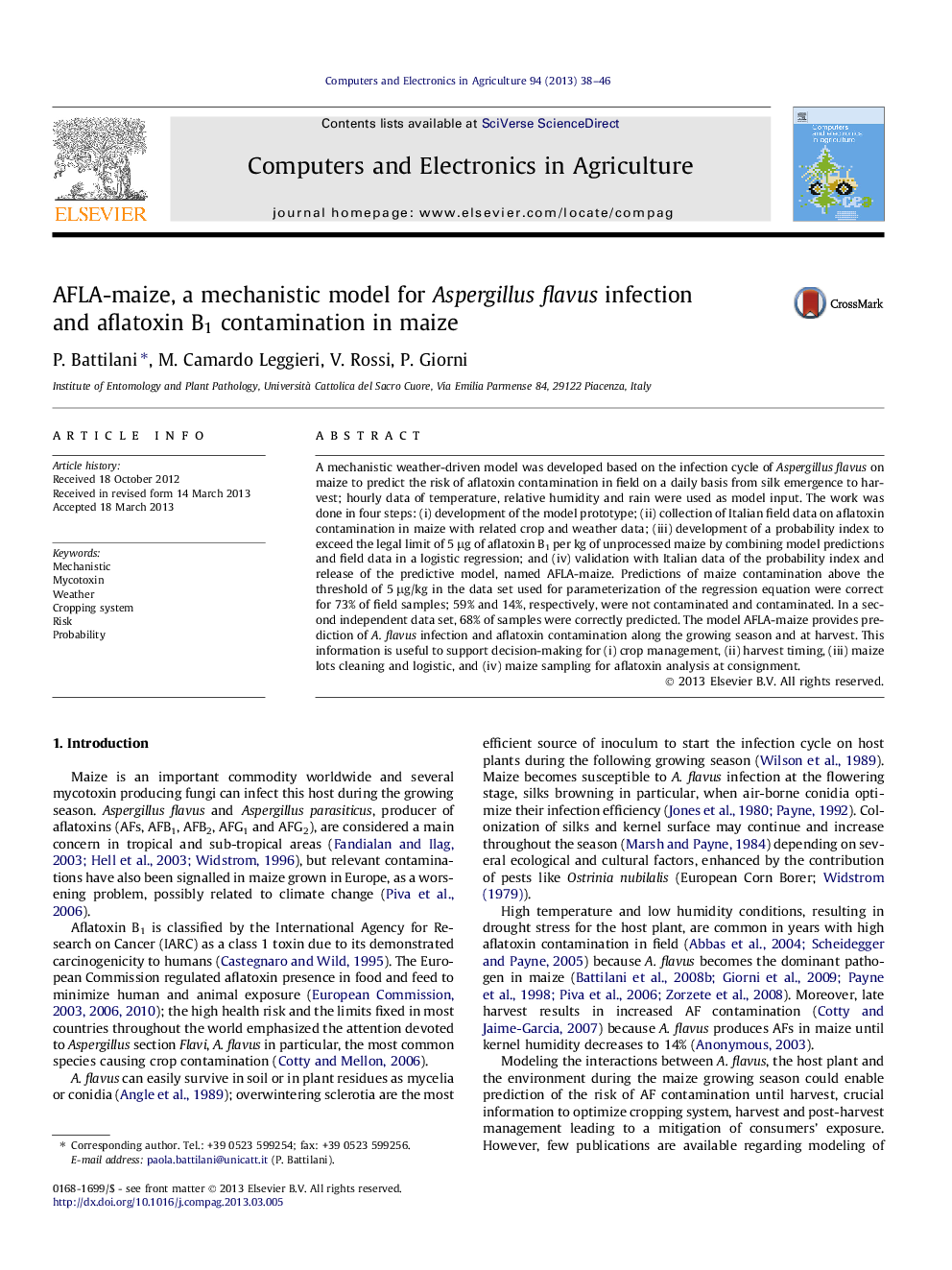| Article ID | Journal | Published Year | Pages | File Type |
|---|---|---|---|---|
| 84907 | Computers and Electronics in Agriculture | 2013 | 9 Pages |
•A mechanistic model, AFLA-maize, was developed for Aspergillus flavus on maize.•The risk of aflatoxin contamination is predicted from silk emergence to harvest.•The probability to overcome the threshold of 5 μg/kg is computed daily.•Model validation showed around 70% of correct predictions.•This is a good support in decision making during crop growing and post-harvest.
A mechanistic weather-driven model was developed based on the infection cycle of Aspergillus flavus on maize to predict the risk of aflatoxin contamination in field on a daily basis from silk emergence to harvest; hourly data of temperature, relative humidity and rain were used as model input. The work was done in four steps: (i) development of the model prototype; (ii) collection of Italian field data on aflatoxin contamination in maize with related crop and weather data; (iii) development of a probability index to exceed the legal limit of 5 μg of aflatoxin B1 per kg of unprocessed maize by combining model predictions and field data in a logistic regression; and (iv) validation with Italian data of the probability index and release of the predictive model, named AFLA-maize. Predictions of maize contamination above the threshold of 5 μg/kg in the data set used for parameterization of the regression equation were correct for 73% of field samples; 59% and 14%, respectively, were not contaminated and contaminated. In a second independent data set, 68% of samples were correctly predicted. The model AFLA-maize provides prediction of A. flavus infection and aflatoxin contamination along the growing season and at harvest. This information is useful to support decision-making for (i) crop management, (ii) harvest timing, (iii) maize lots cleaning and logistic, and (iv) maize sampling for aflatoxin analysis at consignment.
Graphical abstractFigure optionsDownload full-size imageDownload as PowerPoint slide
